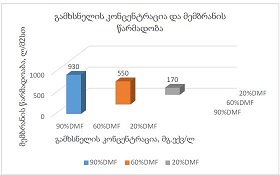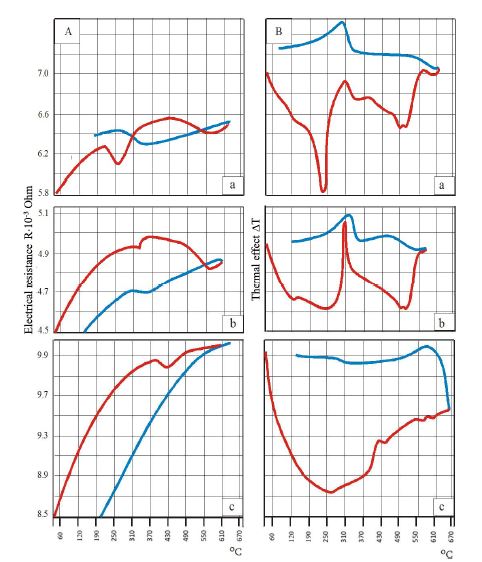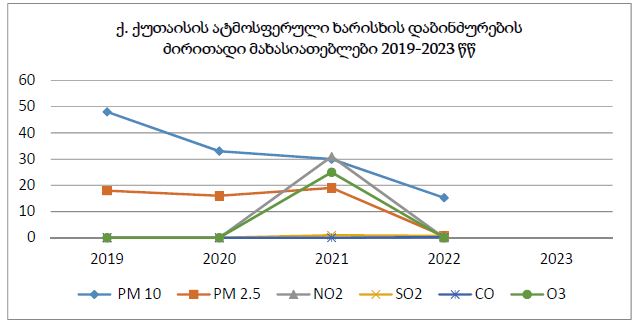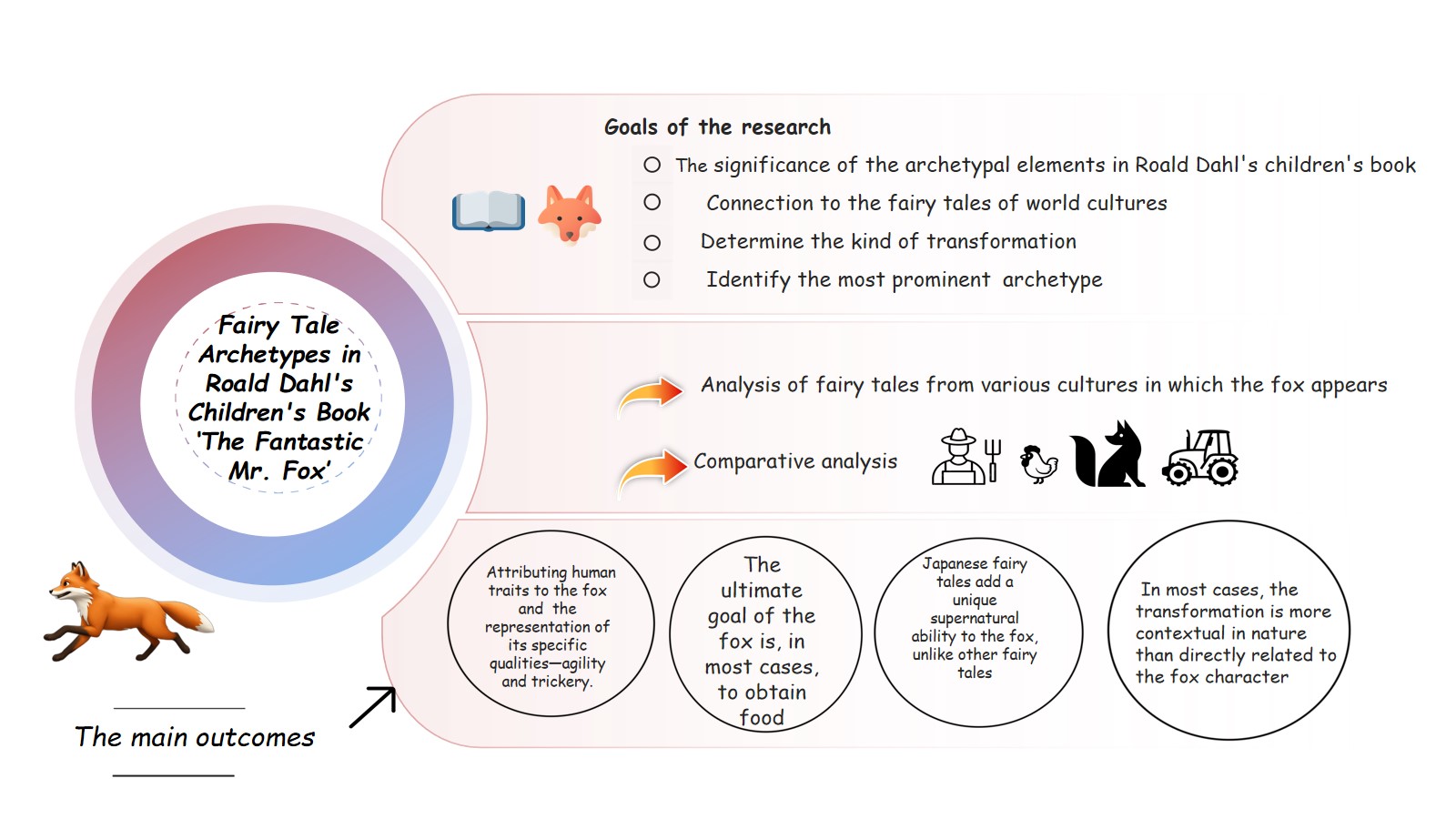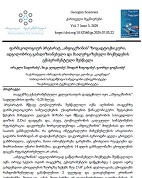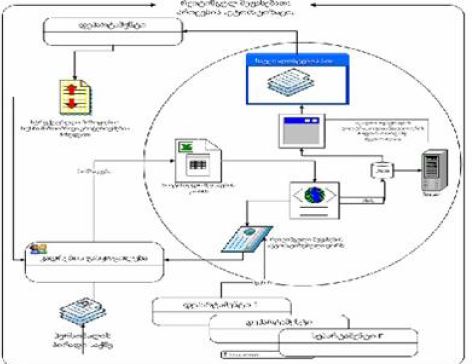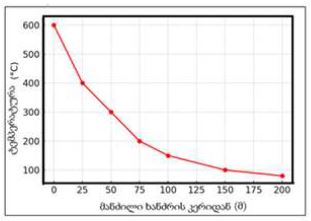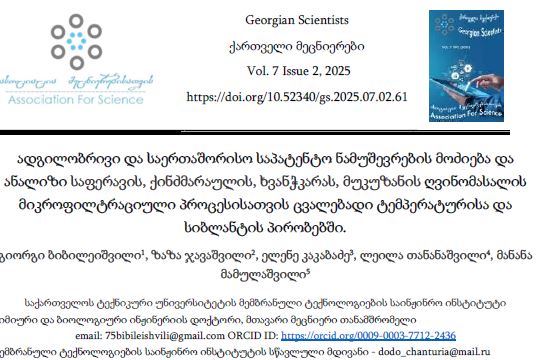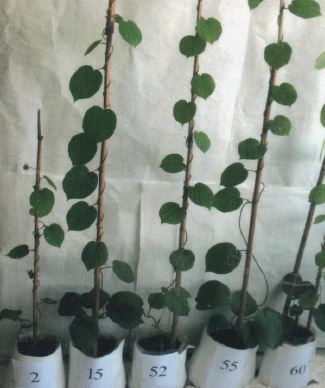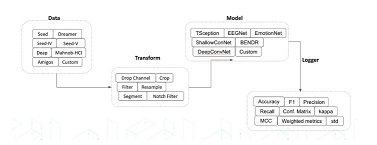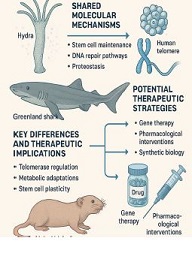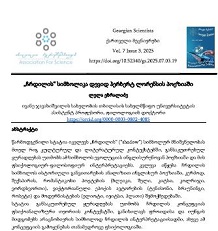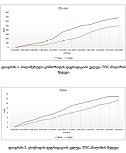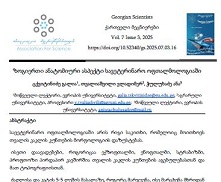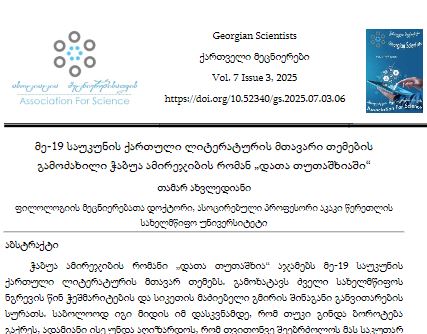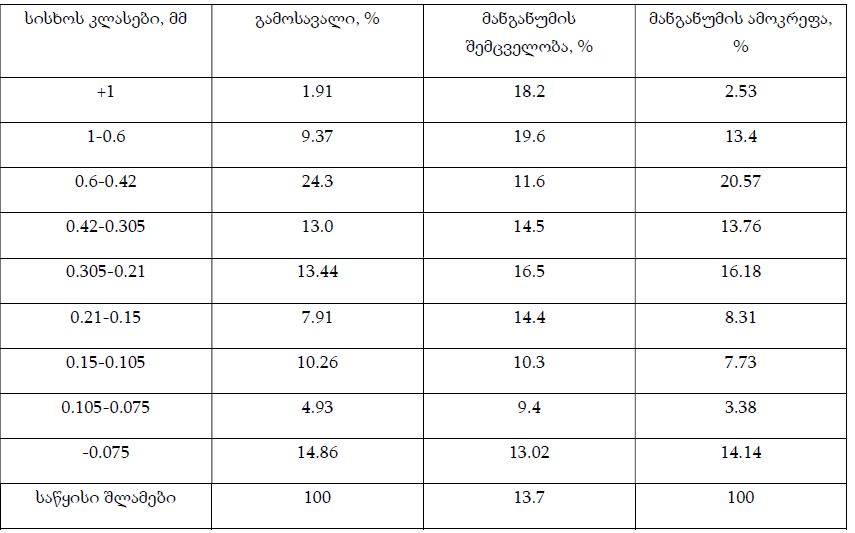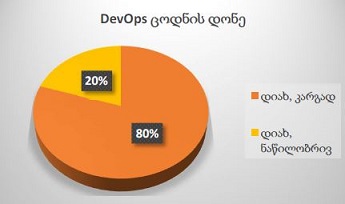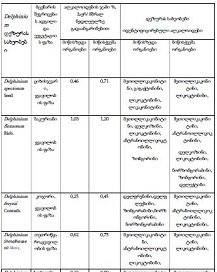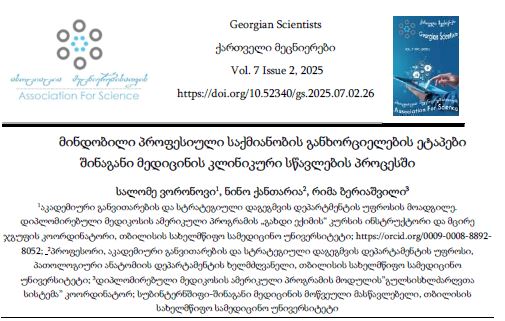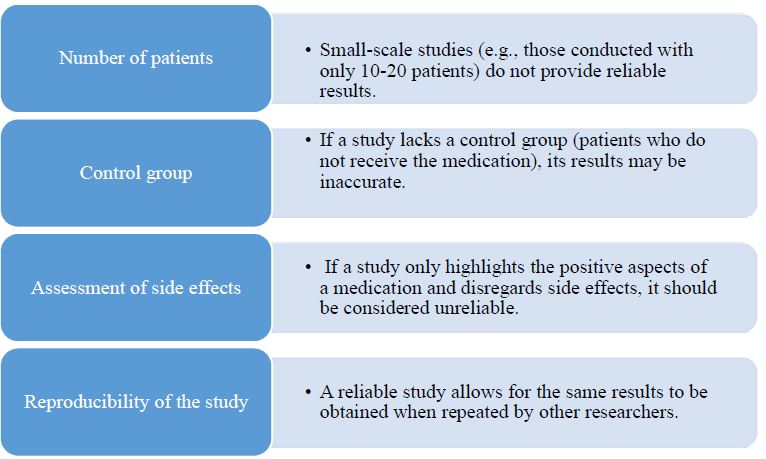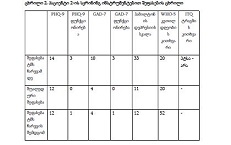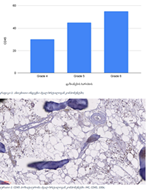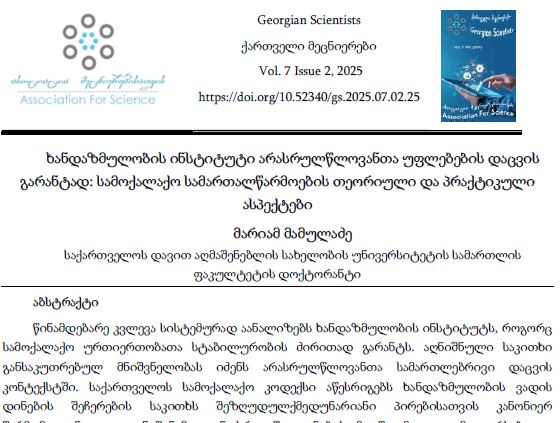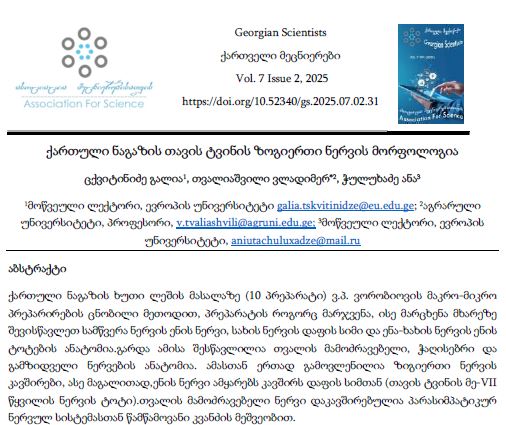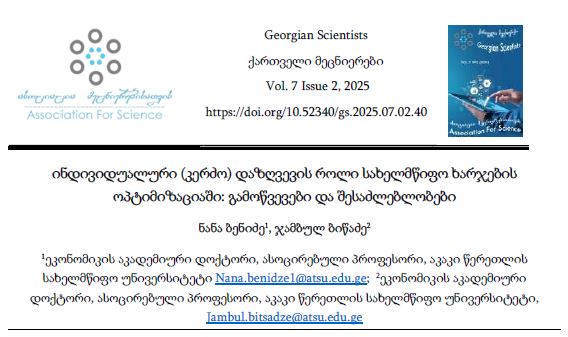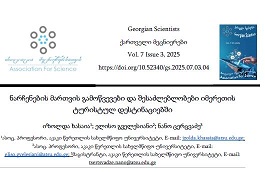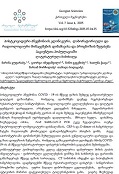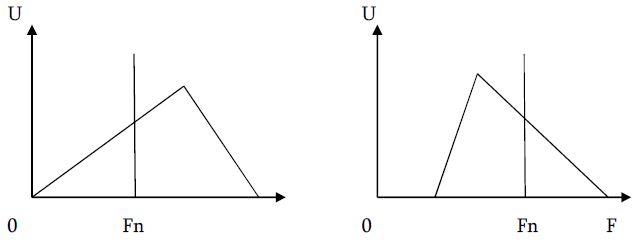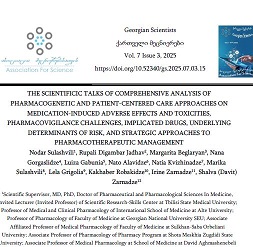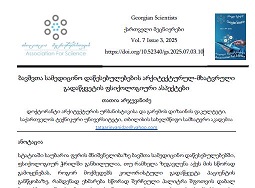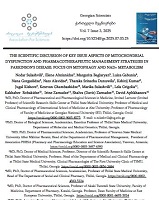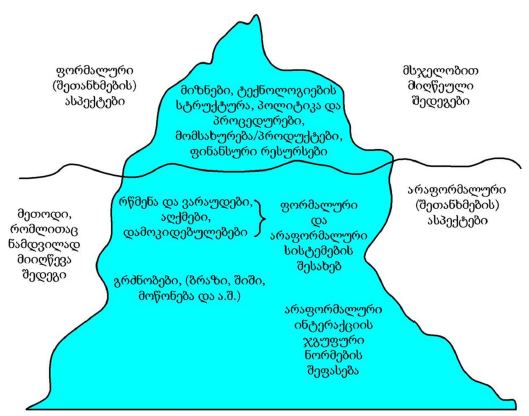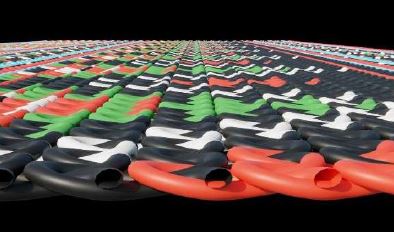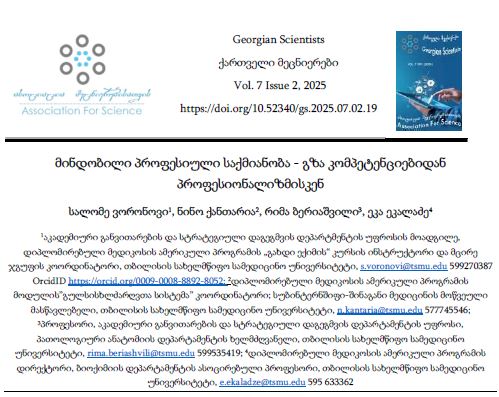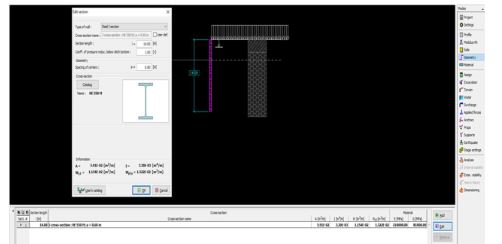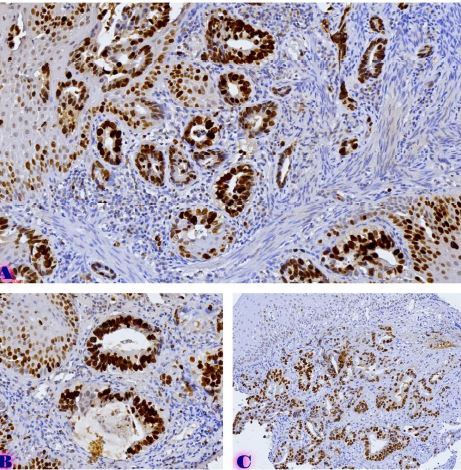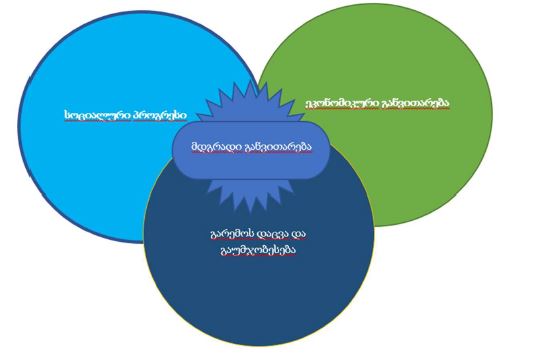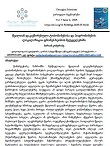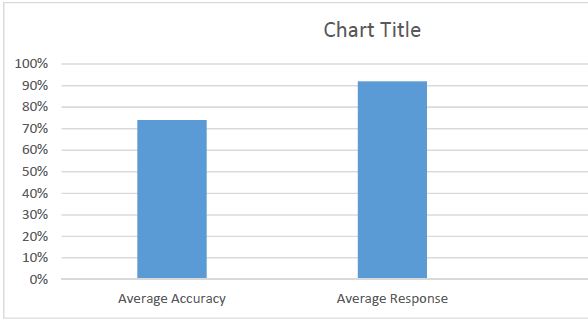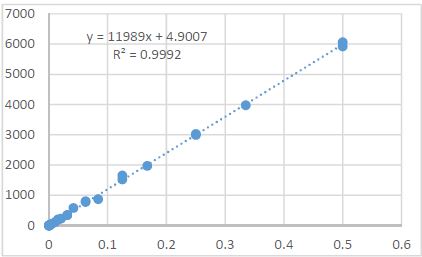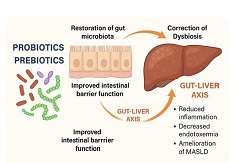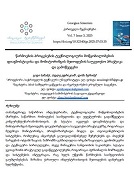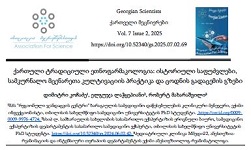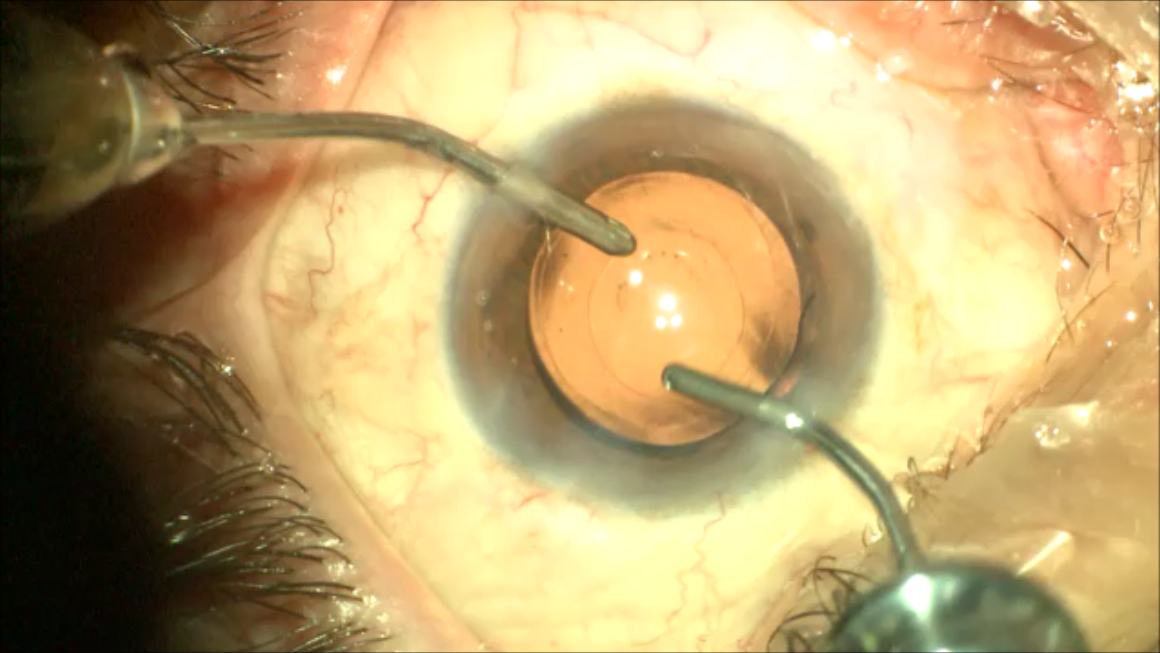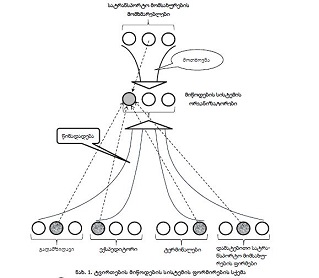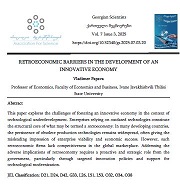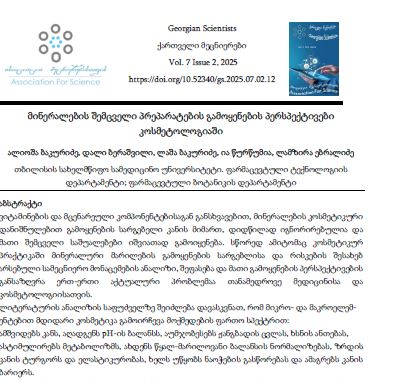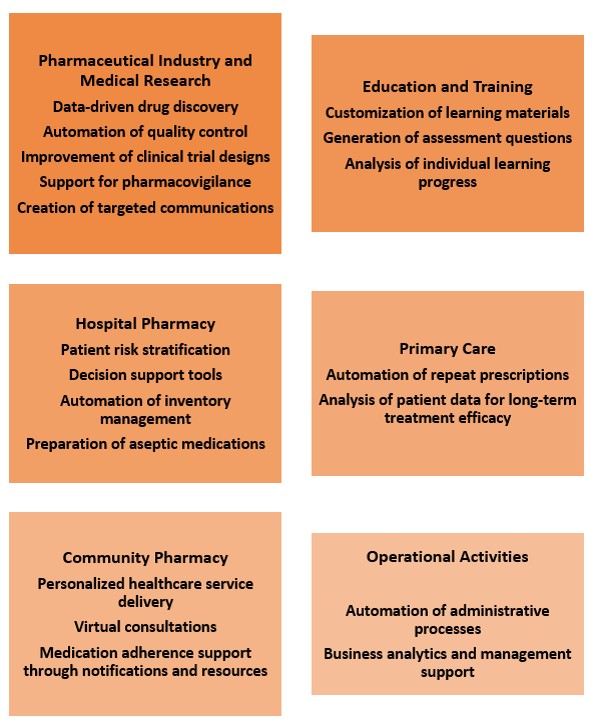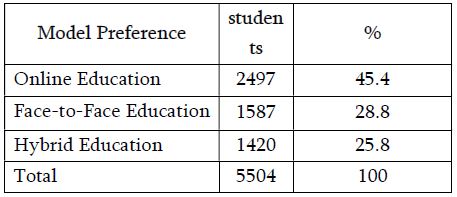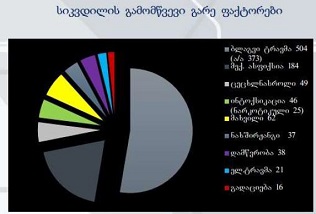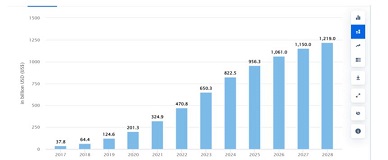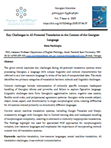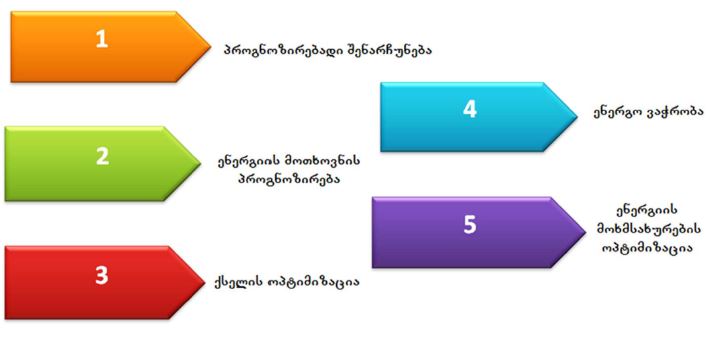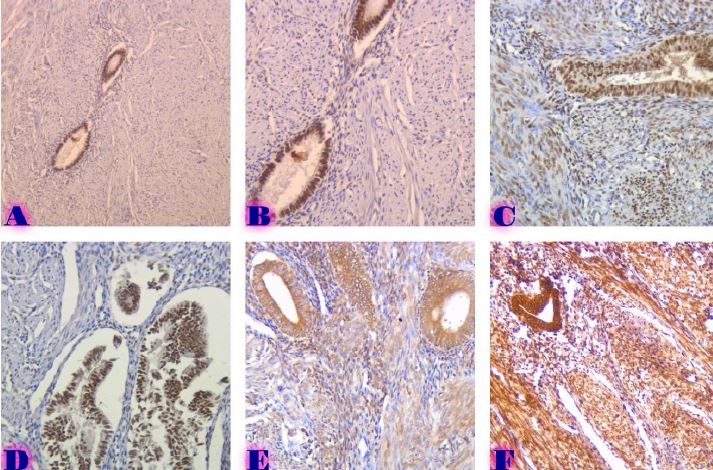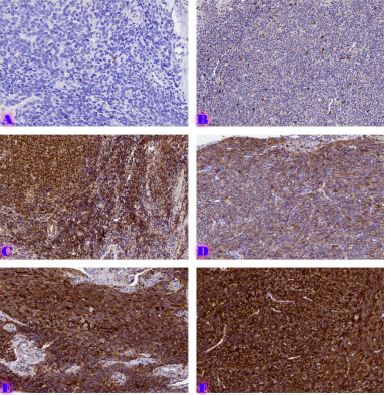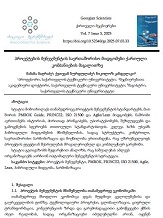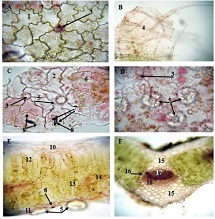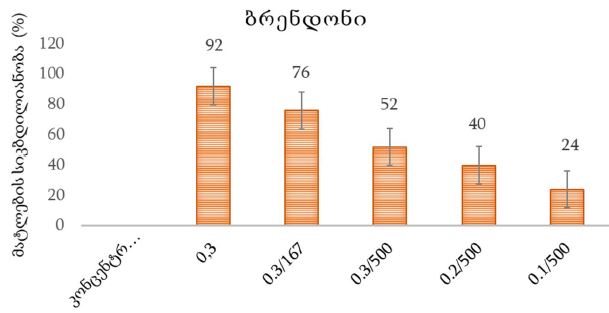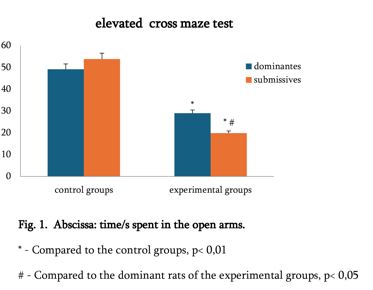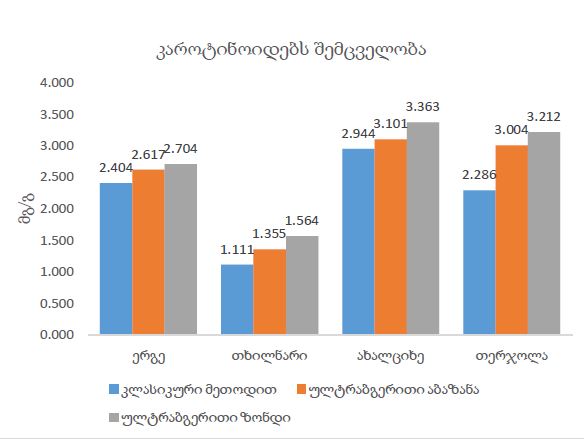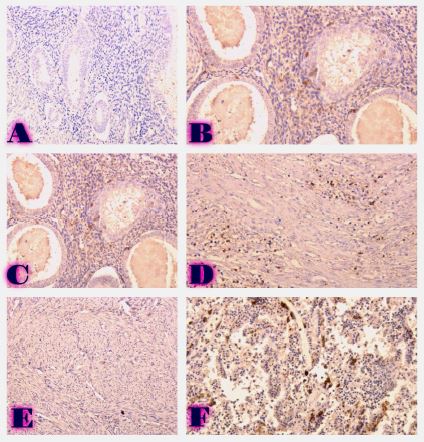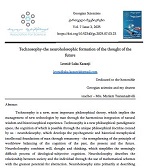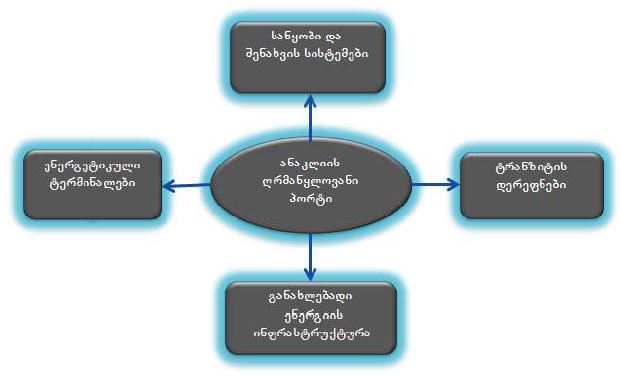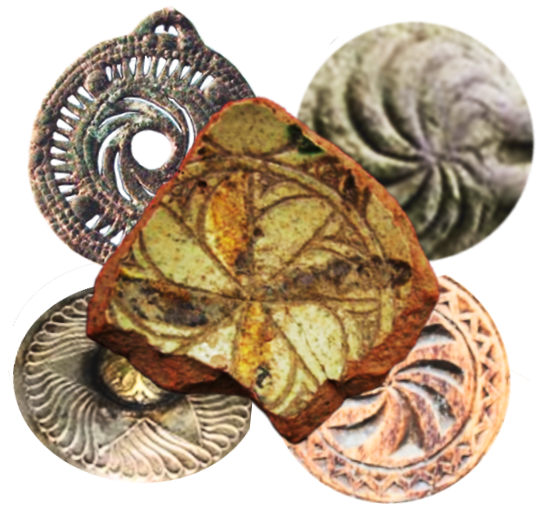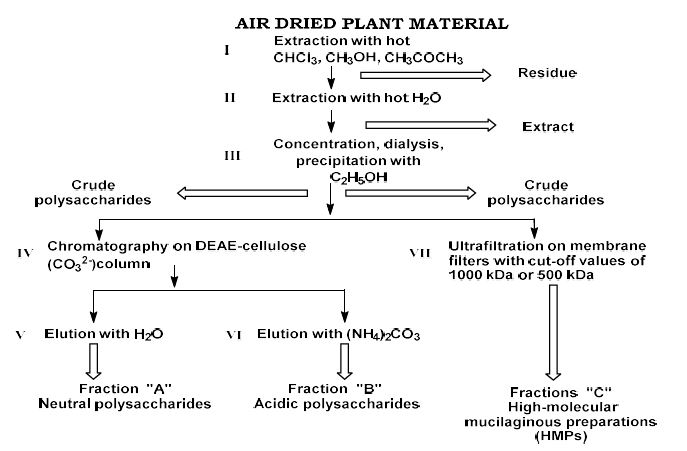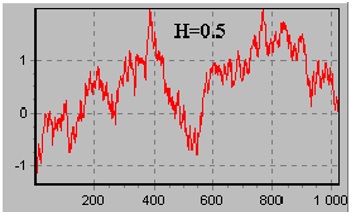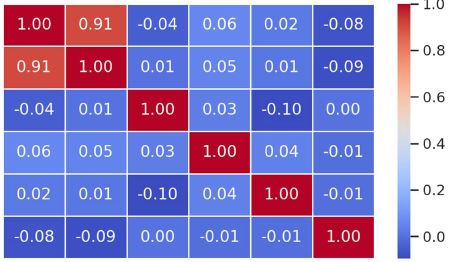საქართველოში მოზარდი Thymus collinus Bieb. მიწისზედა ნაწილების ფარმაკოგნოსტური შესწავლა
ჩამოტვირთვები
განხორციელდა ქვემო ქართლის ფლორისტულ რაიონში (საქართველო) შეგროვილი, კავკასიის ენდემური სახეობის Thymus collinus Bieb. მიწისზედა ნაწილებიდან მიღებული ეთერზეთის ქიმიური შემადგენლობის კვლევა. ტერპენული კომპონენტების პროცენტული შემცველობა განისაზღვრა გაზური ქრომატოგრაფიით. ეთერზეთის დომინანტი კომპონენტებია ნეროლიდოლი (43.42 %) და კარვაკროლი (21.40 %). იდენტიფიცირებულ ტერპენულ ნაერთებში ჭარბობს ჟანგბადშემცველი სესქვიტერპენები. ეთერზეთმა გამოავლინა მნიშვნელოვანი ანტიოქსიდანტური აქტივობა ORAC ტესტში (5.41± 0.03 მიკრომოლი ტროლოქსის ექვივალენტი/მგ), ასევე ხასიათდება ზომიერი ციტოტოქსიური აქტივობით (80 ± 11 მკგ/მლ) ფილტვის კარცინომის (A-549) უჯრედული ხაზის წინააღმდეგ.
Downloads
G. Çelik et al., ‘Biological activity, and volatile and phenolic compounds from five Lamiaceae species’, Flavour Fragr. J., vol. 36, no. 2, pp. 223–232, Mar. 2021, doi: 10.1002/ffj.3636.
O. Sytar, I. Hemmerich, M. Zivcak, C. Rauh, and M. Brestic, ‘Comparative analysis of bioactive phenolic compounds composition from 26 medicinal plants’, Saudi J. Biol. Sci., vol. 25, no. 4, pp. 631–641, May 2018, doi: 10.1016/j.sjbs.2016.01.036.
კუჭუხიძე ჯ., ჯოხაძე მ., ბოტანიკა (სამკურნალო მცენარეები). თბილისი, 2012.
L. R. Ramos da Silva et al., ‘Lamiaceae Essential Oils, Phytochemical Profile, Antioxidant, and Biological Activities’, Evid. Based Complement. Alternat. Med., vol. 2021, pp. 1–18, Dec. 2021, doi: 10.1155/2021/6748052.
B. Tohidi, M. Rahimmalek, and A. Arzani, ‘Essential oil composition, total phenolic, flavonoid contents, and antioxidant activity of Thymus species collected from different regions of Iran’, Food Chem., vol. 220, pp. 153–161, Apr. 2017, doi: 10.1016/j.foodchem.2016.09.203.
Morales, R, ‘The history, botany and taxonomy of the genus Thymus’, Taylor Francis Lond. U. K., 2002.
დავლიანიძე მ., ღვინიაშვილი ც., მუყბანიანი მ., ჯიჯოლია-იმნაძე ლ., ჯუღელი თ., საქართველოს ფლორის ნომენკლატურული ნუსხა. თბილისი, 2018.
საქართველოს ფლორა, vol. XI. თბილისი: მეცნიერება, 1987.
M. Nikolić et al., ‘Chemical composition, antimicrobial, antioxidant and antitumor activity of Thymus serpyllum L., Thymus algeriensis Boiss. and Reut and Thymus vulgaris L. essential oils’, Ind. Crops Prod., vol. 52, pp. 183–190, Jan. 2014, doi: 10.1016/j.indcrop.2013.10.006.
S. Jarić, M. Mitrović, and P. Pavlović, ‘Review of Ethnobotanical, Phytochemical, and Pharmacological Study of Thymus serpyllum L.’, Evid. Based Complement. Alternat. Med., vol. 2015, pp. 1–10, 2015, doi: 10.1155/2015/101978.
S. Ivasenko et al., ‘Antimicrobial Activity of Ultrasonic Extracts of Two Chemotypes of Thymus serpyllum L. of Central Kazakhstan and their Polyphenolic Profiles’, Open Access Maced. J. Med. Sci., vol. 9, no. A, pp. 61–67, Jan. 2021, doi: 10.3889/oamjms.2021.5520.
J. Legault, K. Girard-Lalancette, D. Dufour, and A. Pichette, ‘Antioxidant Potential of Bark Extracts from Boreal Forest Conifers’, Antioxidants, vol. 2, no. 3, pp. 77–89, Jul. 2013, doi: 10.3390/antiox2030077.
A. Grenier, J. Legault, A. Pichette, L. Jean, A. Bélanger, and R. Pouliot, ‘Antioxidant, Anti-Inflammatory, and Anti-Aging Potential of a Kalmia angustifolia Extract and Identification of Some Major Compounds’, Antioxidants, vol. 10, no. 9, p. 1373, Aug. 2021, doi: 10.3390/antiox10091373.
H. Coté, M.-A. Boucher, A. Pichette, and J. Legault, ‘Anti-Inflammatory, Antioxidant, Antibiotic, and Cytotoxic Activities of Tanacetum vulgare L. Essential Oil and Its Constituents’, Medicines, vol. 4, no. 2, p. 34, May 2017, doi: 10.3390/medicines4020034.
S. Oueslati, R. Ksouri, H. Falleh, A. Pichette, C. Abdelly, and J. Legault, ‘Phenolic content, antioxidant, anti-inflammatory and anticancer activities of the edible halophyte Suaeda fruticosa Forssk’, Food Chem., vol. 132, no. 2, pp. 943–947, May 2012, doi: 10.1016/j.foodchem.2011.11.072.
Teona Korkotadze; Dali Berashvili; Sopio Gokadze; Malkhaz Jokhadze; Malkhaz Getia; Ketevan Mchedlidze; Jean Legault; Vakhtang Mshvildadze. Chemical Composition and Biological Activity of Aerial Parts of Thymus Collinus Bieb. Growing in Georgia. Georgian Biomedical News 2023, 1 (4). https://doi.org/10.52340/gbmn.2023.01.01.43.
A. C. Figueiredo, J. G. Barroso, L. G. Pedro, and J. J. C. Scheffer, ‘Factors affecting secondary metabolite production in plants: volatile components and essential oils’, Flavour Fragr. J., vol. 23, no. 4, pp. 213–226, Jul. 2008, doi: 10.1002/ffj.1875.
საავტორო უფლებები (c) 2024 ქართველი მეცნიერები

ეს ნამუშევარი ლიცენზირებულია Creative Commons Attribution-NonCommercial-NoDerivatives 4.0 საერთაშორისო ლიცენზიით .







